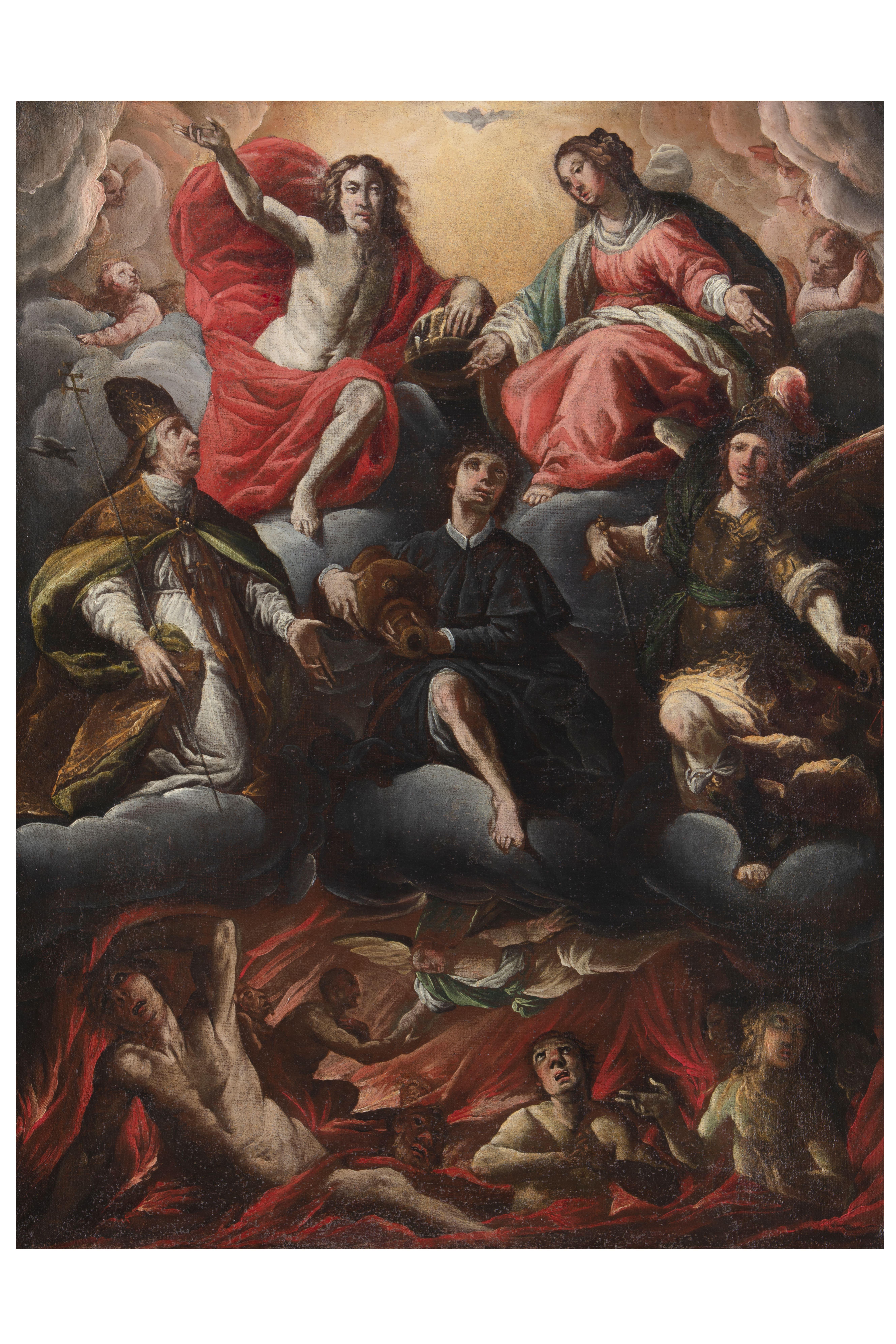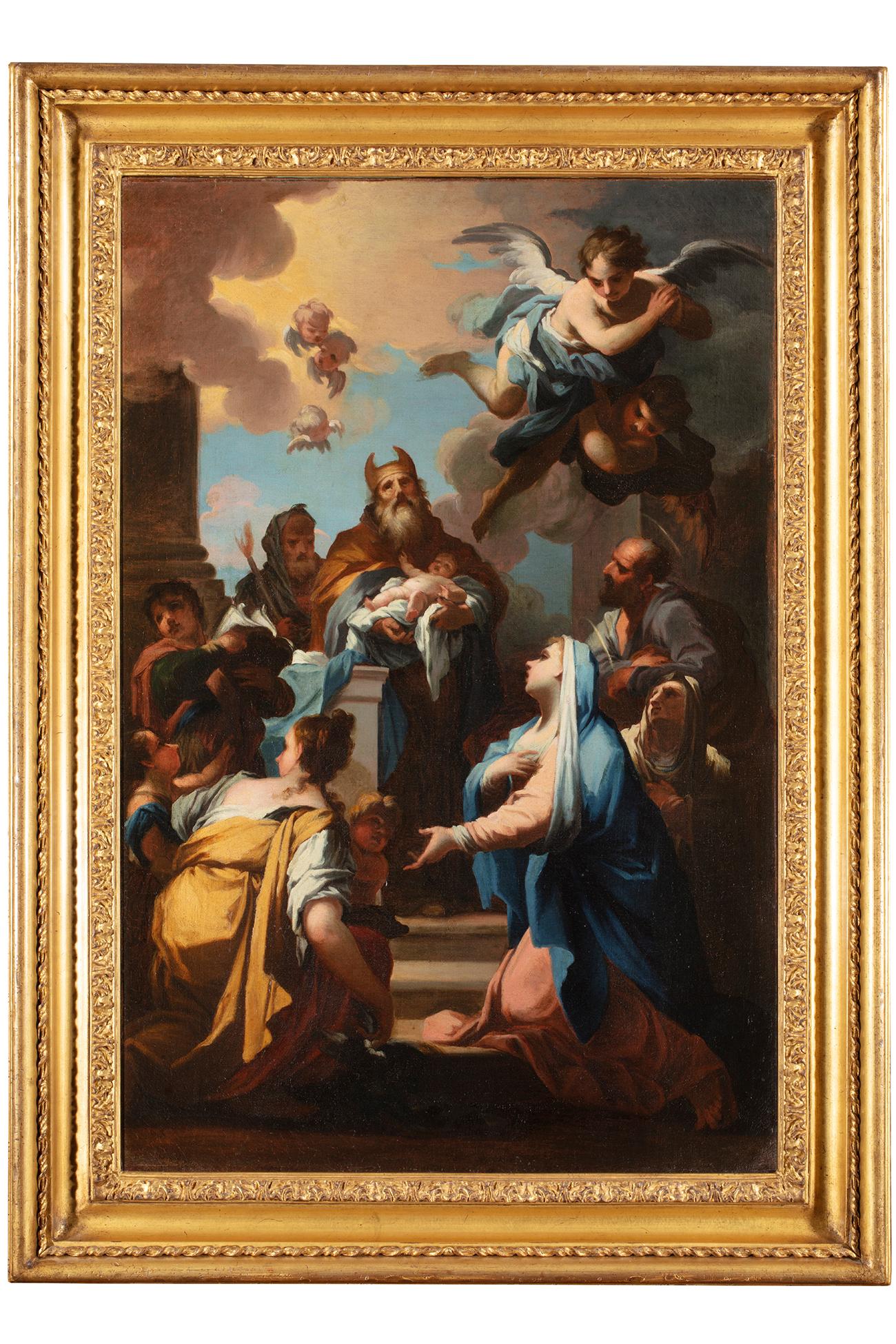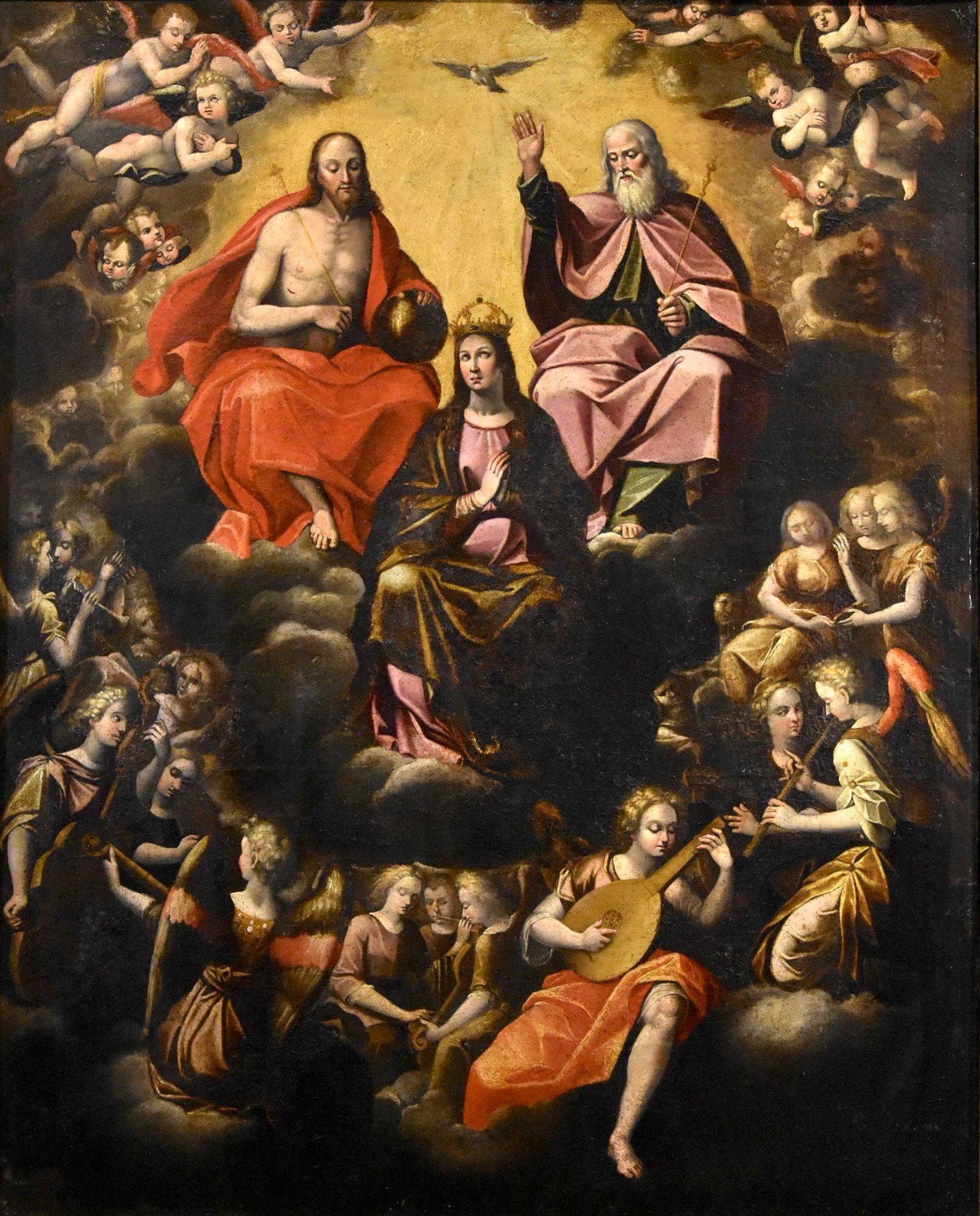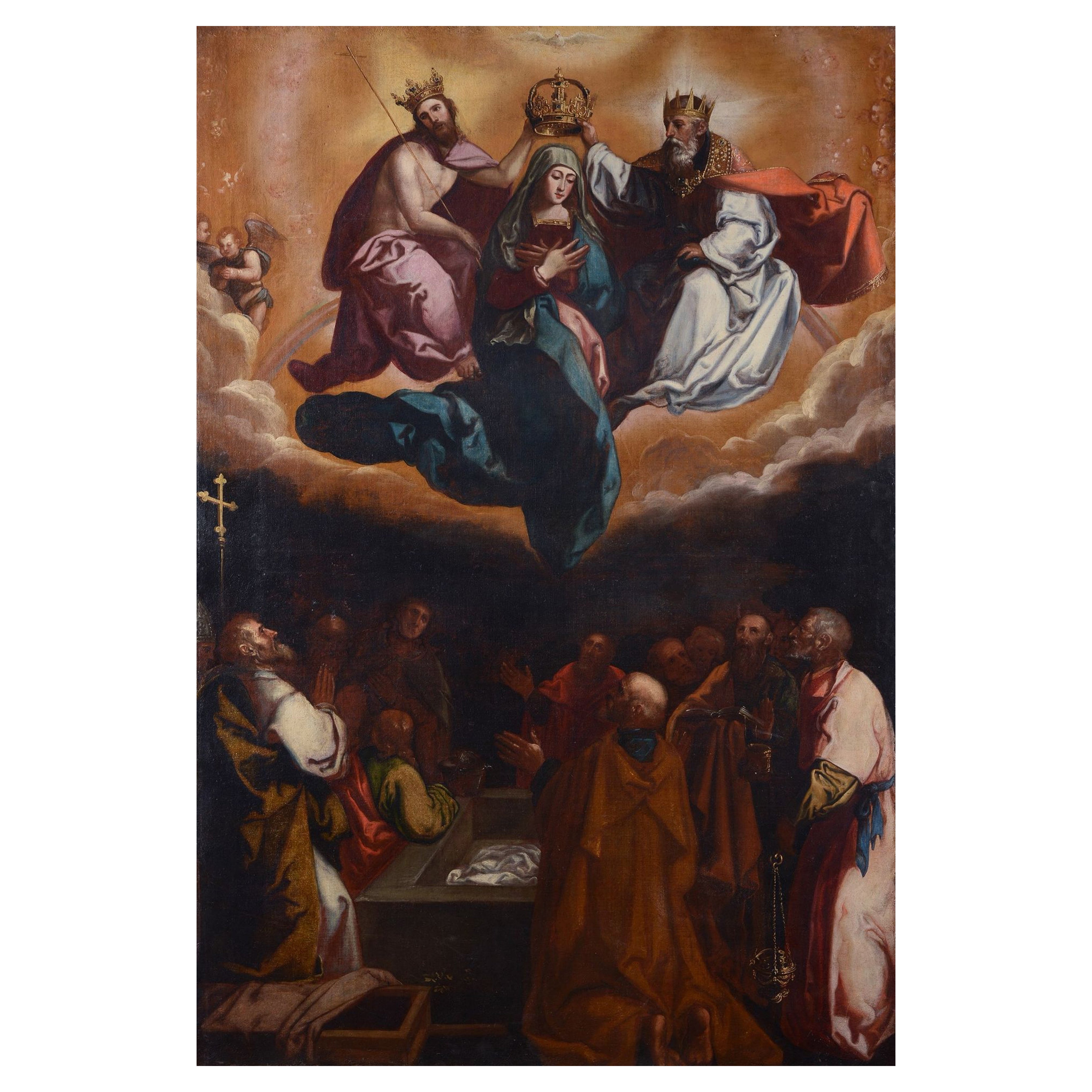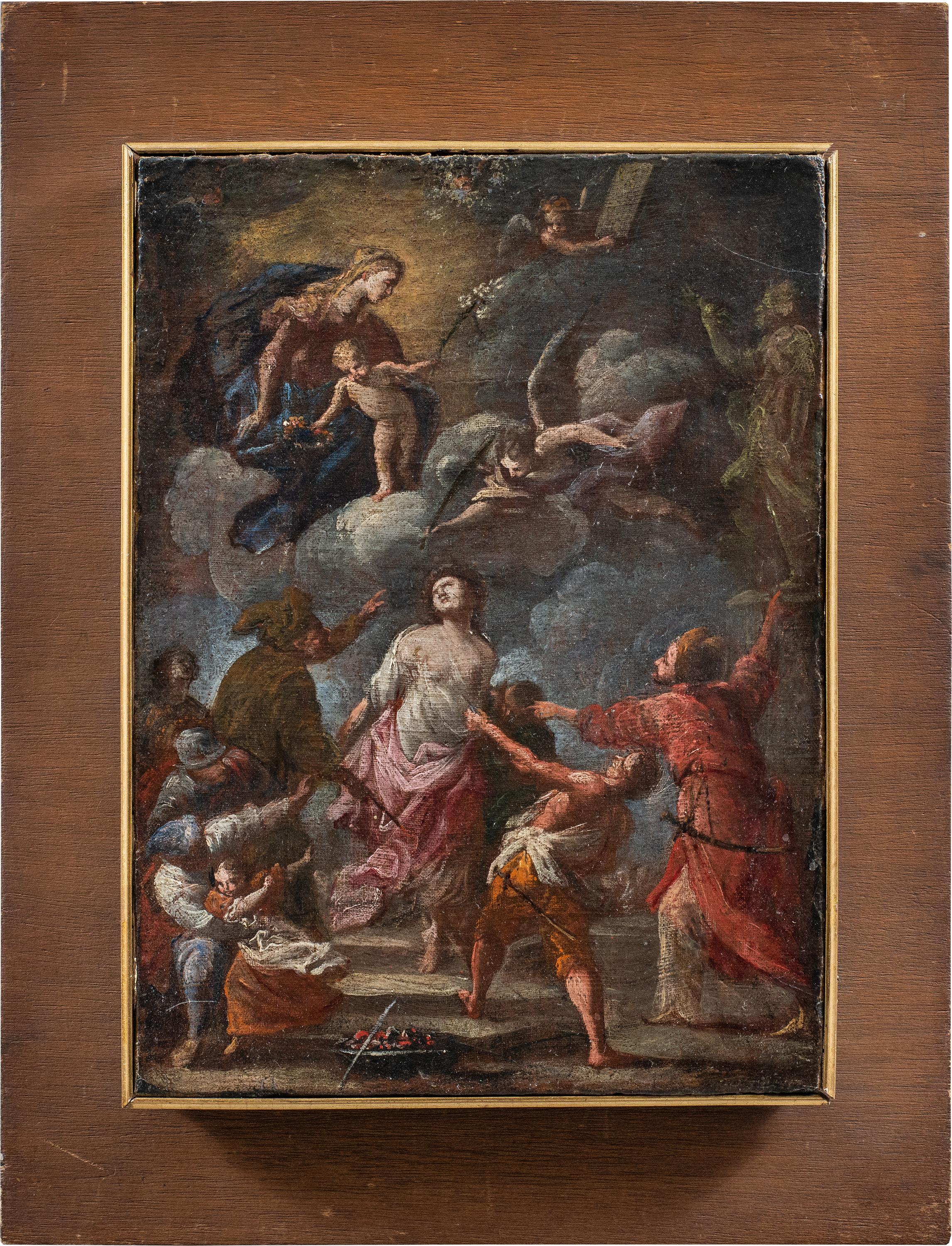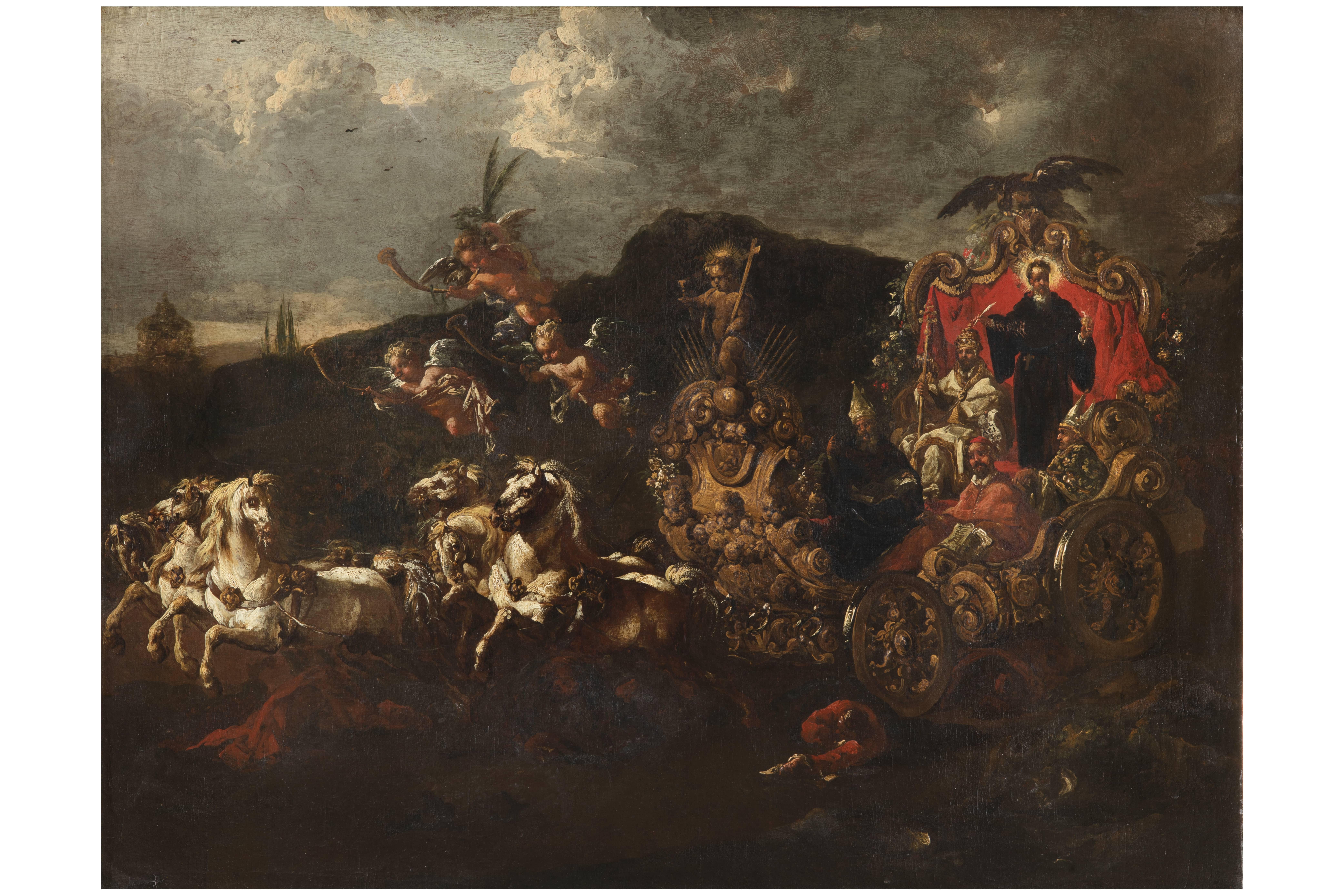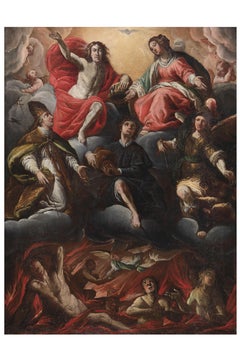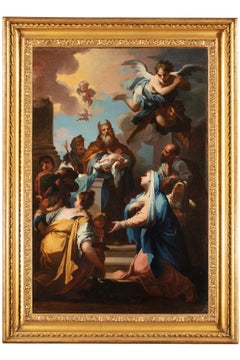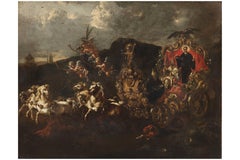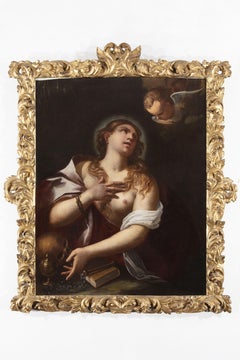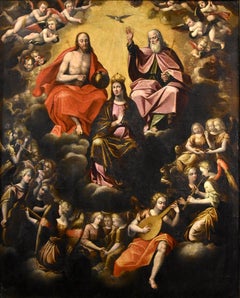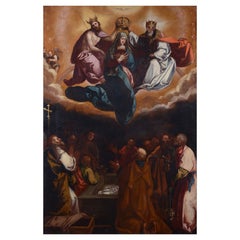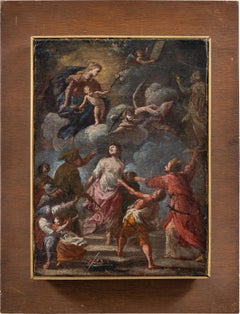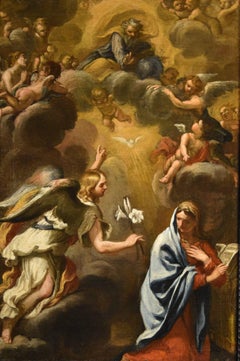Items Similar to 17th Century By Domenico Maria Canuti Assumption of the Virgin Oil on Canvas
Want more images or videos?
Request additional images or videos from the seller
1 of 7
Domenico Maria Canuti17th Century By Domenico Maria Canuti Assumption of the Virgin Oil on Canvas17th century
17th century
$41,010.97
$51,263.7220% Off
£30,663.91
£38,329.8820% Off
€34,640
€43,30020% Off
CA$57,434.43
CA$71,793.0420% Off
A$63,142.63
A$78,928.2920% Off
CHF 32,639.40
CHF 40,799.2620% Off
MX$755,541.82
MX$944,427.2720% Off
NOK 412,065.11
NOK 515,081.3820% Off
SEK 386,322.56
SEK 482,903.2020% Off
DKK 263,885.12
DKK 329,856.3920% Off
About the Item
Domenico Maria Canuti (Bologna, Italy, 1626 – 1684)
Title: Assumption of the Virgin
Medium: Oil on canvas
Dimensions: 138 x 104.5 cm without frame
Expertise by Professor Micaela Lipparini and Andrea Emiliani, art historian
Publications: unpublished
Domenico Maria Canuti (1625-1684) was an Italian painter of the Baroque period, active mainly in Bologna and Rome. He was a major painter of fresco decorations. He trained both with Guido Reni (1575-1642) and Guercino (1591-1666). This exquisite painting was attributed to Domenico Maria Canuti by Andrea Emiliani, art historian, and Professor Micaela Lipparini. The work by Canuti is a reproduction of the “Assumption of the Virgin” by Carracci at the Prado. This is a work from Canuti's youthful period. With this unpublished work, which is in an excellent state of preservation, the young Canuti thus presents himself as a talented artist on the Bolognese scene.
- Creator:Domenico Maria Canuti (Italian)
- Creation Year:17th century
- Dimensions:Height: 54.34 in (138 cm)Width: 41.15 in (104.5 cm)Depth: 1.97 in (5 cm)
- More Editions & Sizes:138 x 104.5 cm without framePrice: $51,264
- Medium:
- Movement & Style:
- Period:
- Condition:
- Gallery Location:Milano, IT
- Reference Number:1stDibs: LU1701213661822
About the Seller
5.0
Vetted Professional Seller
Every seller passes strict standards for authenticity and reliability
Established in 1964
1stDibs seller since 2021
Typical response time: 21 hours
- ShippingRetrieving quote...Shipping from: Milano, Italy
- Return Policy
Authenticity Guarantee
In the unlikely event there’s an issue with an item’s authenticity, contact us within 1 year for a full refund. DetailsMoney-Back Guarantee
If your item is not as described, is damaged in transit, or does not arrive, contact us within 7 days for a full refund. Details24-Hour Cancellation
You have a 24-hour grace period in which to reconsider your purchase, with no questions asked.Vetted Professional Sellers
Our world-class sellers must adhere to strict standards for service and quality, maintaining the integrity of our listings.Price-Match Guarantee
If you find that a seller listed the same item for a lower price elsewhere, we’ll match it.Trusted Global Delivery
Our best-in-class carrier network provides specialized shipping options worldwide, including custom delivery.More From This Seller
View All17th Century By Gian Giacomo Barbelli Paradise and Purgatory Oil on Canvas
Located in Milano, Lombardia
Already been in Koelliker collection (no. inv. LK0431)
Publications:
- C. Alpini, Ritratto di Gian Giacomo Barbelli nel IV centenario della nascita, in “Insula Fulcheria”, XXXIV, ...
Category
17th Century Old Masters Figurative Paintings
Materials
Canvas, Oil
18th Century by Matteo Bonechi Presentation of Jesus Painting Oil on Canvas
Located in Milano, Lombardia
Matteo Bonechi (Florence, Italy, 1669 - Florence, Italy, 1756)
Title: Presentation of Jesus
Medium: Oil on canvas
Dimensions: without frame 75 x 49 cm – with frame 89.5 x 65 cm
Shaped, carved and gilded wooden box frame
Expertise by Sandro Bellesi, Professor and art historian
Fairs: The International Biennial of Antiques in Florence 2022 (BIAF, Biennale Internazionale dell’Antiquariato di Firenze)
Publications: Bozzetti, modelletti, sketches: dalla collezione di Giorgio Baratti (From the Giorgio Baratti Collection) curated by Anna Orlando, Agnese Marengo and Annalisa Scarpa, Genova, 2022, pp. 20, 21.
The present painting is a very interesting testimony of the creative process of Matteo Bonechi, one of the leading artists on the Tuscan art scene in the early 18th century. The canvas in question is in fact the last preparatory model made by Bonechi before he executed an altarpiece for the church of San Filippo Neri in Cortona in 1716. The scene presented here is that of the Presentation of Jesus, when, forty days after his birth, the child is ransomed through an offering in the temple and placed in the hands of Simeon, who prophesies his future: the coming of the Messiah...
Category
Early 18th Century Old Masters Figurative Paintings
Materials
Oil, Canvas
17th Century By Livio Mehus Allegory of Augustinian Order Oil on Canvas
Located in Milano, Lombardia
Livio Mehus (Oudenaarde, Belgium, 1630 - Florence, Italy, 1691)
Title: Allegory of Augustinian Order
Medium: Oil on canvas
Dimensions: without frame 94 x 98 cm - with frame 116 x 143...
Category
17th Century Old Masters Figurative Paintings
Materials
Oil, Canvas
$57,869 Sale Price
20% Off
17th-18th Century By Giovanni Girolamo Bonesi Mary Magdalene Oil on Canvas
Located in Milano, Lombardia
Beautiful original frame in carved, sculpted and gilded wood.
Oral expertise by Prof. Massimo Pulini.
Category
17th Century Old Masters Figurative Paintings
Materials
Canvas, Oil
17th Century by Giuseppe Nuvolone Adoration of the Magi Oil on paper and canvas
Located in Milano, Lombardia
Giuseppe Nuvolone (Milan, 1619 – 1703)
Title: Adoration of the Magi
Medium: Oil on paper applied to canvas
Dimensions: without frame 16.5 x 24 cm – with frame 22 x 29 cm
Antique sha...
Category
17th Century Old Masters Figurative Paintings
Materials
Paper, Canvas, Oil
18th Century by Pietro Bardellino Mary Magdalene Painting Oil on Canvas
By Pietro Bardellino
Located in Milano, Lombardia
Pietro Bardellino (Naples, Italy, 1731 – 1806)
Title: Mary Magdalene
Medium: Oil on canvas
Dimensions: without frame 75 x 60 cm – with frame 97 x 82 cm
Antique shaped and carved wood...
Category
Mid-18th Century Old Masters Portrait Paintings
Materials
Oil, Canvas
$15,854 Sale Price
22% Off
You May Also Like
Assumption Virgin Trinity Caccia Paint 17th Century Oil on canvas Old master Art
Located in Riva del Garda, IT
Guglielmo Caccia (Monabone, 1568 - Moncalvo, 1625) and workshop
Assumption of the Virgin with the Trinity and concert of angels
Oil on canvas (125 x 100 cm - In frame 137 x 112 c...
Category
17th Century Old Masters Paintings
Materials
Oil
$11,697 Sale Price
20% Off
Northern Italian School, 17th century "Coronation of the Virgin"
Located in Madrid, ES
Northern Italian School, 17th century
"Coronation of the Virgin"
oil on canvas,
160X108.5cm
no cornice
good condition
Category
Antique Early 17th Century Italian Baroque Paintings
Materials
Paint
Baroque Neapolitan master - 17th century figure painting - Martyrdom St. Agatha
Located in Varmo, IT
Neapolitan Master (17th-18th century) - Sketch for the Martyrdom of Saint Agatha.
32 x 23.5 cm unframed, 42 x 32 cm including wooden support.
Oil on canvas, unframed (not signed).
...
Category
Late 17th Century Rococo Figurative Paintings
Materials
Canvas, Oil, Panel
$2,367 Sale Price
33% Off
Annunciation Ferri Paint 17th Century Oil on canvas Old master Religious Rome
Located in Riva del Garda, IT
Ciro Ferri (Rome, 1634 – Rome, 1689) Attributed to
Annunciation (probably a preparatory sketch)
Oil on canvas 61 x 41 cm - In frame 79 x 49 cm
The work, certainly commission...
Category
17th Century Old Masters Paintings
Materials
Oil
$6,033 Sale Price
20% Off
Conversion Saint Paul Antonio Tempesta Paint 17th Century Oil on canvas Italy
Located in Riva del Garda, IT
Antonio Tempesta (Florence 1555 - Rome 1630) Circle
The Conversion of Saint Paul on the Road to Damascus
Oil on canvas 112 x 102 cm Framed 125 x 114 cm
The scene depicts the e...
Category
17th Century Old Masters Paintings
Materials
Oil
Annunciation Bonini Paint Oil in canvas Old master 17th Century Leonardo Italy
Located in Riva del Garda, IT
Girolamo Bonini, called Anconitano (Ancona, circa 1600 - Bologna 1680)
Annunciation (or Madonna of the Beautiful Angel)
Oil on canvas (115 x 91 cm. - Framed 134 x 108 cm.)
Work accompanied by the expertise of Prof. Emilio Negro
The work, undoubtedly commissioned as an object of private devotion, shows the Annunciation to the Virgin Mary, a Gospel episode here set on the two figures portrayed in the foreground, the Archangel Gabriel with outstretched wings, a portrait of supernatural beauty, and the Virgin;
We see her here absorbed in reading a prayer book with her eyes turned humbly downwards as a sign of devotion, while a small cherub hands her white lilies, a symbol of purity and chastity.
In the upper part of the composition is the austere image of God the Father, with the dove radiating with light, emblem of the Holy Spirit, surrounded by a flock of angels fluttering in the clouds charged with intense glow and play of light, in full Baroque style.
It should also be noted that the image of the Saviour's mother in a delicately pious attitude, with her yellow veil, her broad blue mantle and her usual modest red dress from which the edges of her white blouse protrude, is to be interpreted as a kind of tender allegory of sacred love.
The painting in question is an interesting replica with variants of the composition commissioned from Francesco Albani for the Fioravanti chapel in the ancient church...
Category
17th Century Old Masters Paintings
Materials
Oil
$14,775 Sale Price
20% Off
